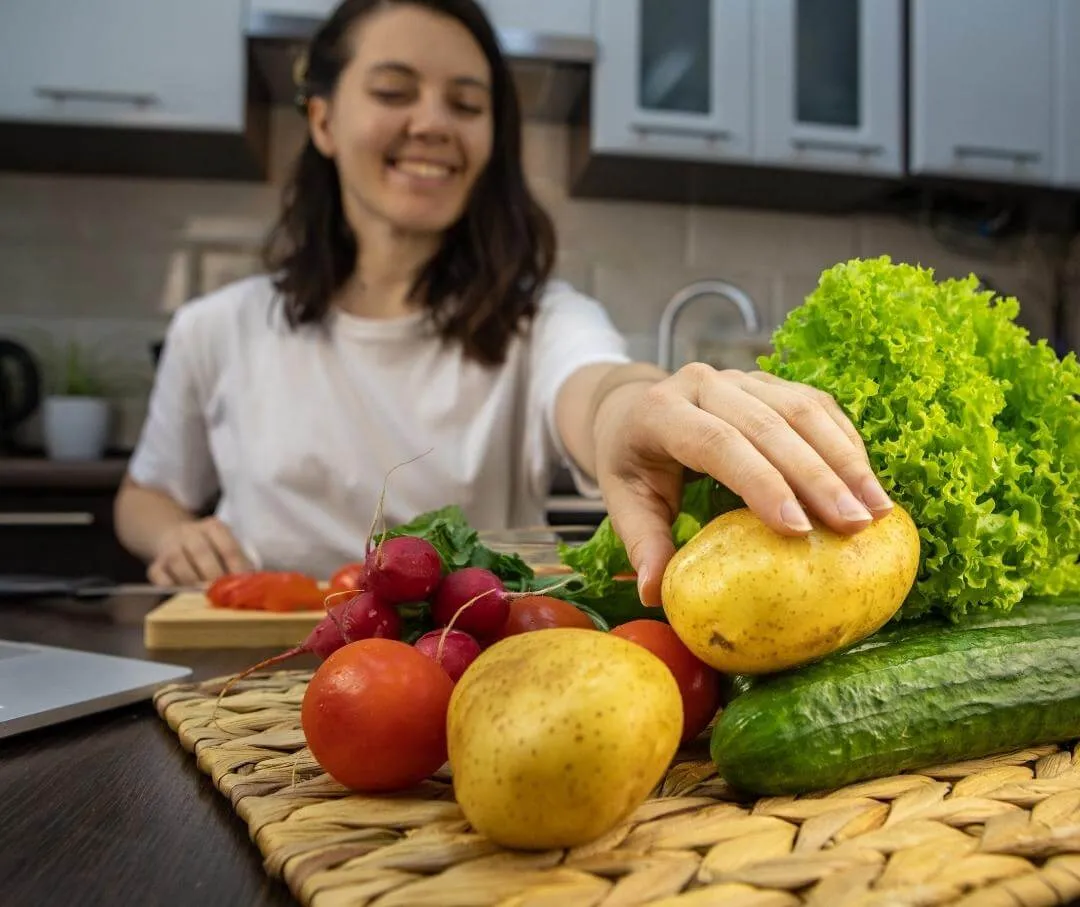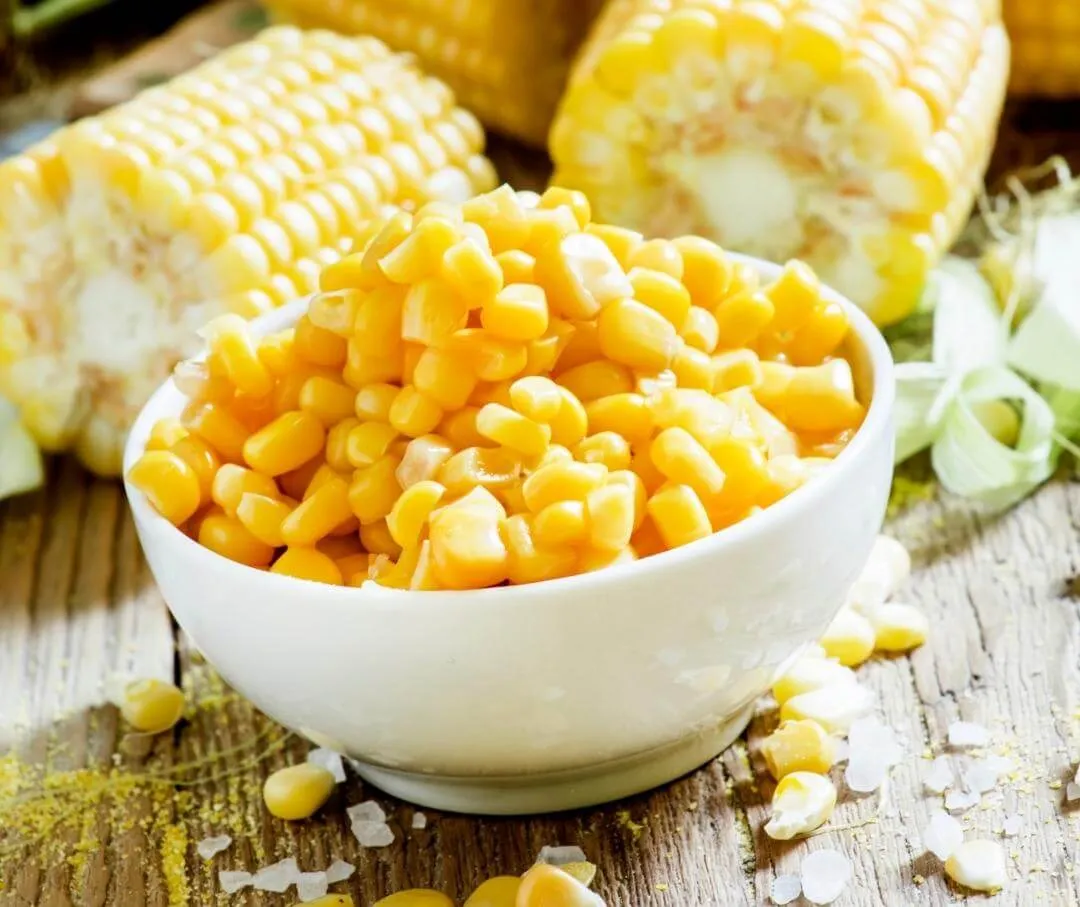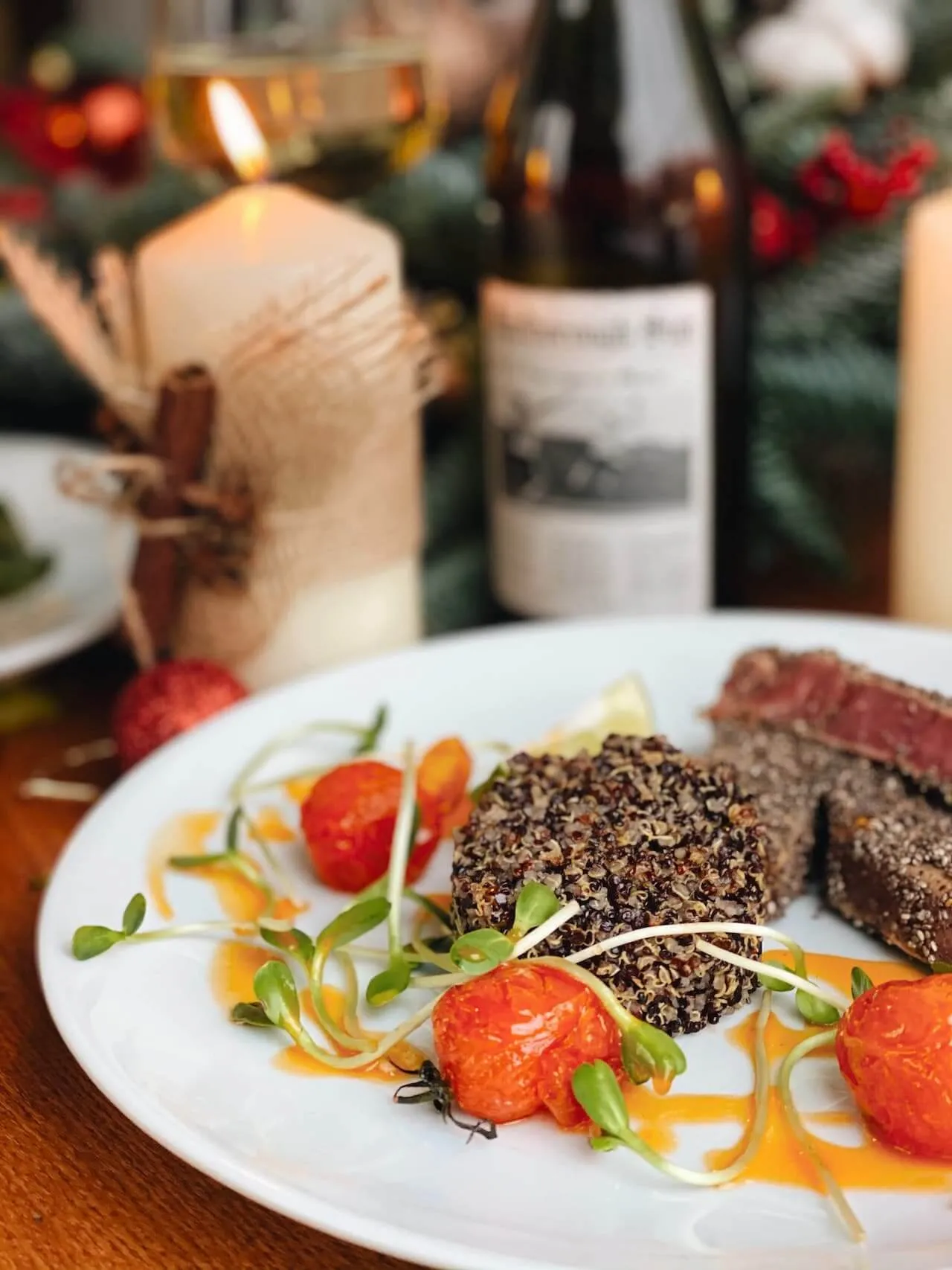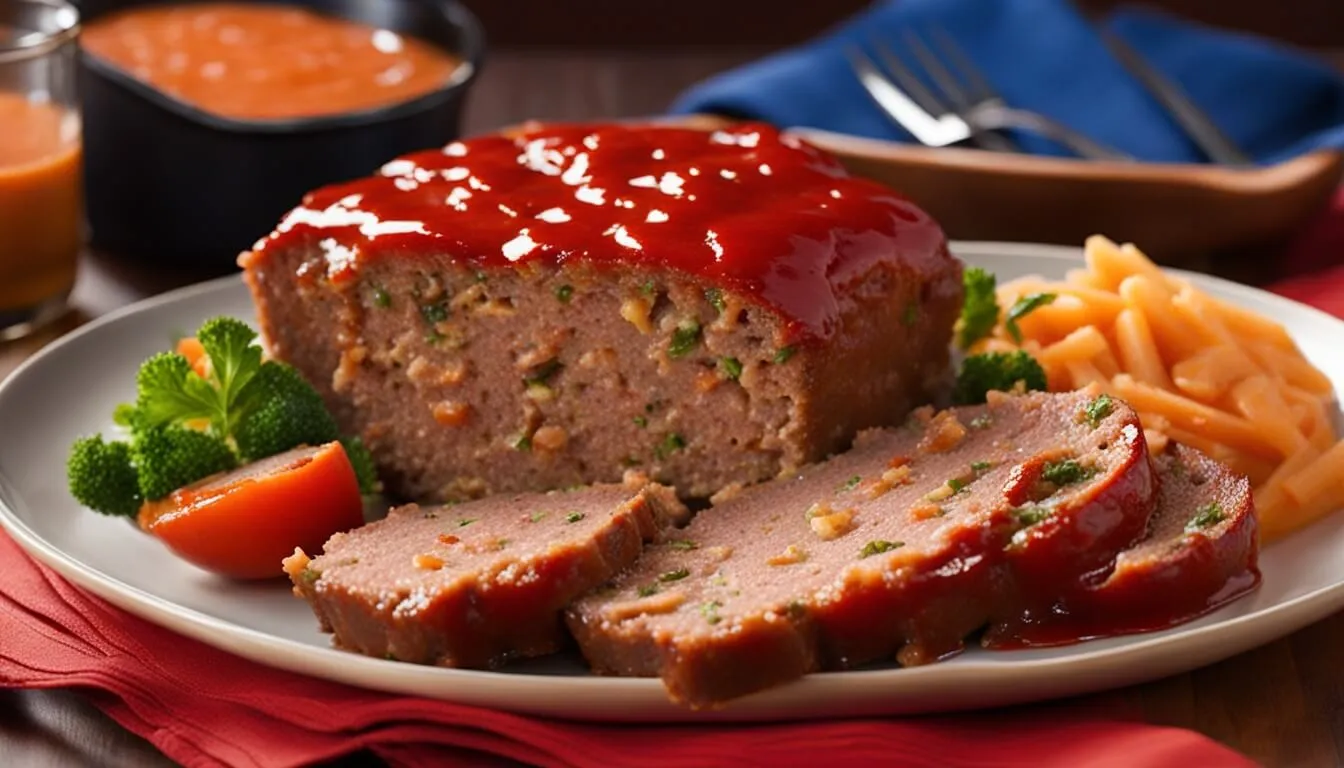Sweet potatoes get a lot of hype around the holidays, but they’re delicious and nutritious all year round. Packed with flavor and plenty of nutrients, sweet potatoes offer a wide array of health benefits. But did you know how we prepare them can actually affect their glycemic index? Not to worry! They’re generally a medium glycemic index food, but if you need to keep your dish’s glycemic index as low as possible, we know a few tricks to keep your sweet potato glycemic index on the down low.
What Is the Glycemic Index?
{{mid-cta}}
The glycemic index (GI) measures how carbohydrate-containing foods can affect your blood sugar levels. Measured on a scale of 0 to 100, foods can be classified as low, medium, and high-glycemic-index foods:
- Low-GI: 0-55
- Medium-GI: 56-69
- High-GI: 70-100
Simple carbs or foods with added sugars break down more quickly in the bloodstream, earning them a higher GI score. On the other hand, foods with high protein, fat, or fiber content will have less of an effect on our blood sugar levels and usually lower GI scores.
While a food’s chemical makeup is largely responsible for its glycemic index, its preparation can also impact its GI value. Different cooking methods can alter the chemical structure of a food, ultimately influencing our glycemic response after consumption. This is especially true for sweet potatoes.
Glycemic Index of Sweet Potato
Cooking methods can have a significant impact on the glycemic index of the final dish. The glycemic index for sweet potatoes is no exception. Sweet potatoes can have a glycemic index between 44 and 91, depending on how they're prepared.
Boiling
When sweet potatoes are boiled, it’s thought that they retain more resistant starch, which helps resist digestion and limits its effects on blood sugar levels. The GI of a boiled sweet potato is 44, which tells us that boiled sweet potatoes can be an integral part of a low glycemic index meal.¹
Baking
Baked sweet potatoes have a significantly higher GI than sweet potatoes in any other form. In fact, when baked for 30 minutes, the baked sweet potato glycemic index falls around 91 on the GI scale, classifying them as high GI food.²
Roasting
Similar to baking, roasting sweet potatoes will break down their resistant starch and increase their glycemic index. Remember, a high GI score can rapidly spike your blood sugar levels, so eat them in moderation.
Steaming

Steaming your sweet potatoes exposes them to less heat than baking them in an oven. When steamed for approximately 35 minutes, sweet potatoes have a glycemic index of 71 (which puts them right on the border between a medium and high GI).³
Frying

Sweet potatoes that have been sliced and deep-fried in oil have a slightly lower GI than baked or roasted ones. With an average GI value of 58, they are classified as a medium GI food.⁴ The presence of fat can help slow the emptying of the stomach and the absorption of sugar in the bloodstream. So, instead of regular french fries that can have a GI of up to 76 and lack variety in micronutrients, you might opt for sweet potato fries!⁸
Why Does Glycemic Index Vary With Cooking?
How foods are cooked can significantly impact their nutritional value and glycemic index, which is especially true for sweet potatoes. For instance, one cup of raw sweet potatoes contains approximately 114 calories, 26.7 grams of carbohydrates, and 5.6g of sugar.⁵ However, the nutrition facts shift slightly when the potato is exposed to heat. One cup of baked sweet potatoes contains approximately 180 calories, 41.4 g of carbs, and 13 g of sugar.⁶
So why does cooking increase carbohydrates in sweet potatoes? When exposed to heat during the cooking process, the starch in sweet potatoes breaks down into two polysaccharides called amylopectin and amylose. Polysaccharides are carbohydrates made up of a number of sugar molecules, and our pancreatic enzymes can easily digest them. As they are digested, they turn into maltose, a sugar our body can use for energy, thus causing a spike in our blood sugar levels.
Simply put, once heat breaks down the starch in sweet potatoes, it’s easier for your body to convert it into sugar, thus affecting your blood sugar levels more immediately.
Are Sweet Potatoes Healthy?
The simple answer to that question is yes, absolutely! All foods can fit into a well-balanced diet, especially whole foods packed with tons of nutrients. Sweet potatoes are rich in:
- Vitamin A in the form of beta carotene.
- Vitamin B6.
- Vitamin C.
- Potassium.
- Zinc.
- Magnesium.
- Fiber.
Sweet potatoes are also high in antioxidants called carotenoids, which gives sweet potatoes their orange color. Antioxidants can help protect our cells from day-to-day damage.
You might also wonder, are sweet potatoes good for diabetics? Again, yes, but we still need to be aware of our glycemic response. Even with all the health benefits that sweet potatoes offer, it’s important to be mindful of portion sizes and the timing of our meals. The glycemic index can be a helpful tool when navigating those aspects of our diet.
How to Avoid Blood Sugar Spikes
Sweet potatoes fall in the middle of the glycemic index, but don’t let that deter you from adding them to the menu. There are a couple of things we can do to help manage our glycemic response when enjoying sweet potatoes:
Reduce Heat Exposure
The longer a sweet potato is exposed to heat, its GI will likely increase. Baking a sweet potato usually takes around 45 minutes of cooking time at high heat, but you can reduce heat exposure by trying different cooking methods, such as steaming or microwaving. Steaming only needs about 20 minutes to cook your sweet potato thoroughly. Or if you really want to cut down the heat exposure, microwaving your sweet potatoes only takes about 5 to 10 minutes.
Go for Lower-Indexed Sweet Potato Varieties
Did you know different sweet potato varieties have different GI values?
Orange Sweet Potatoes
Orange sweet potatoes tend to be the most common type found in U.S. grocery stores and restaurants. If you’re considering the sweet potato vs white potato glycemic index, orange sweet potatoes have a higher fiber content and, thus, a lower glycemic index, making them a more nutritious option for those with diabetes.
Purple Sweet Potatoes
Purple sweet potatoes have a lower glycemic load than orange sweet potatoes. They contain anthocyanins, which give them their lavender hue inside and out. Research has shown that anthocyanins may help prevent and treat type 2 diabetes by improving insulin resistance.⁷
Japanese Sweet Potatoes
Japanese sweet potatoes, sometimes called white sweet potatoes, contain the extract caiapo. Research has shown a connection between caiapo and reduced fasting and two-hour blood glucose levels.⁹
3 Sweet Potato Recipe Ideas to Try Out
You might immediately think of Grandma’s famous sweet potato casserole when you think of sweet potatoes. And while that is the MVP of every holiday dinner, we’d be missing out if we didn’t enjoy sweet potatoes in any of their other delicious forms.
Consider some of these fresh and savory recipes next time you want to add sweet potatoes to the menu:
Sweet Potato Nachos

Swap out those tortilla chips for thinly sliced sweet potatoes if you want to kick your favorite nacho dish up a notch. Just place your sweet potato slices evenly in the air fryer and spray with a nonstick cooking spray for a few seconds. Top with your favorite frozen veggies (and maybe a fresh jalapeño for taste) and spray again.
Air fry them at 375 degrees for about 20 minutes or until the potatoes are tender yet crisp. Top with cheese, cook for another two minutes, add your favorite garnishes, and they’re ready to eat!
Avocado and Sweet Potato Salad
If you’re looking for a refreshing and satisfying meal, try throwing some roasted sweet potatoes and fresh avocados into your favorite salad. You won’t be sorry you did! Toss them into a mixture of fresh greens and other veggies for a quick, nutrient-dense meal in minutes. Add chicken for a pop of protein or black beans if you follow a vegan diet.
Greens, Sweet Potatoes, and Egg Bowl
This breakfast bowl is packed with nutrients and can be enjoyed any time of the day. Cook your eggs to your liking and lay them atop a bed of fresh greens. Include roasted sweet potatoes, diced avocado, and cooked mushrooms to add more nutrients and fiber to this savory meal.
Monitoring a Healthy and Free Diet
Understanding a food’s impact on blood glucose levels is key to choosing the right foods at the best times. Optimizing our glycemic response to meals helps us meet our immediate nutrition needs while keeping our long-term health in mind. Continuous glucose monitoring (CGM) makes that easier and more accessible than ever, and Signos is leading the way.
This wearable CGM connects via Bluetooth to the Signos app to provide real-time feedback for every meal. We all respond to foods differently, so access to our glucose data can be a real game changer. CGMs make optimizing our nutritional intake manageable, which helps us make small, sustainable changes to avoid blood glucose spikes. And we know controlled blood glucose levels ultimately help us prevent chronic diseases such as type 2 diabetes, heart disease, and obesity.
Topics discussed in this article:
References
- The University of Sydney. (n.d.). GI Search. Glycemic Index. Retrieved October 18, 2022, from https://glycemicindex.com/gi-search/?food_name=sweet%2Bpotato%2B%28Ipomoea%2Bbatatas%29%2Bboiled&product_category=&country=&gi=&gi_filter=&serving_size_%28g%29=&serving_size_%28g%29_filter=&carbs_per_serve_%28g%29=&carbs_per_serve_%28g%29_filter=&gl=&gl_filter=
- The University of Sydney. (n.d.). GI Search. Glycemic Index. Retrieved October 18, 2022, from https://glycemicindex.com/gi-search/?food_name=sweet+potatoes+baked&product_category=&country=&gi=&gi_filter=&serving_size_(g)=&serving_size_(g)_filter=&carbs_per_serve_(g)=&carbs_per_serve_(g)_filter=&gl=&gl_filter=
- The University of Sydney. (n.d.). GI Search. Glycemic Index. Retrieved October 18, 2022, from https://glycemicindex.com/gi-search/?food_name=sweet+potatoes+steamed&product_category=&country=&gi=&gi_filter=&serving_size_(g)=&serving_size_(g)_filter=&carbs_per_serve_(g)=&carbs_per_serve_(g)_filter=&gl=&gl_filter=
- The University of Sydney. (n.d.). GI Search. Glycemic Index. Retrieved October 18, 2022, from https://glycemicindex.com/gi-search/?food_name=sweet+potatoes+fried&product_category=&country=&gi=&gi_filter=&serving_size_(g)=&serving_size_(g)_filter=&carbs_per_serve_(g)=&carbs_per_serve_(g)_filter=&gl=&gl_filter=
- Fooddata Central Search Results. FoodData Central. (2019). Retrieved October 18, 2022, from https://fdc.nal.usda.gov/index.html
- Fooddata Central Search Results. FoodData Central. (2019). Retrieved October 18, 2022, from https://fdc.nal.usda.gov/fdc-app.html#/food-details/168483/nutrients
- Różańska, D., & Regulska-Ilow, B. (2018). The significance of anthocyanins in the prevention and treatment of type 2 diabetes. Advances in clinical and experimental medicine : official organ Wroclaw Medical University, 27(1), 135–142. https://doi.org/10.17219/acem/64983
- The University of Sydney. (n.d.). GI Search. Glycemic Index. Retrieved October 22, 2022, from https://glycemicindex.com/gi-search/&?food_name=french+fries,+frozen,+reheat
- Bernhard Ludvik, Beatrice Neuffer, Giovanni Pacini; Efficacy of Ipomoea batatas (Caiapo) on Diabetes Control in Type 2 Diabetic Subjects Treated With Diet . Diabetes Care 1 February 2004; 27 (2): 436–440. https://doi.org/10.2337/diacare.27.2.436




.svg)










.svg)
.svg)
.svg)
.svg)
.svg)
.svg)
.svg)
